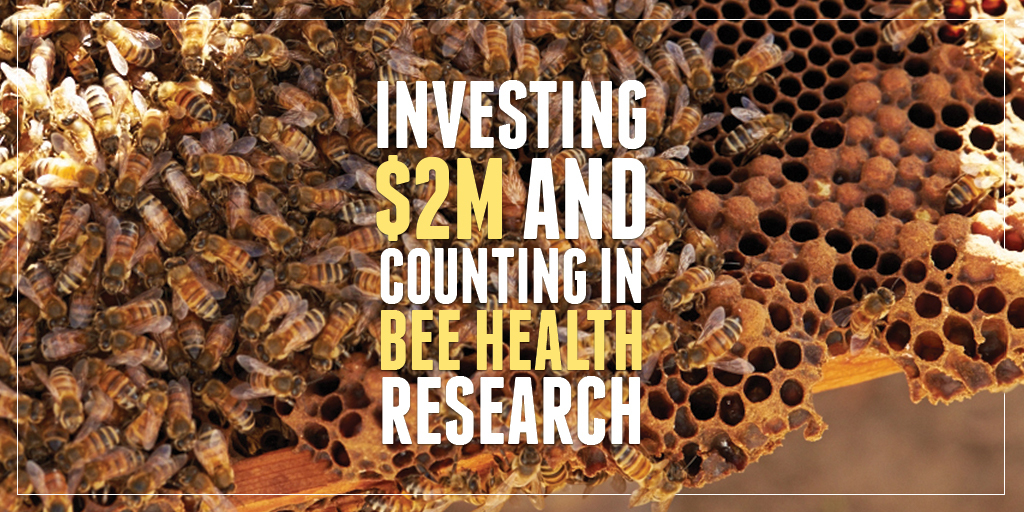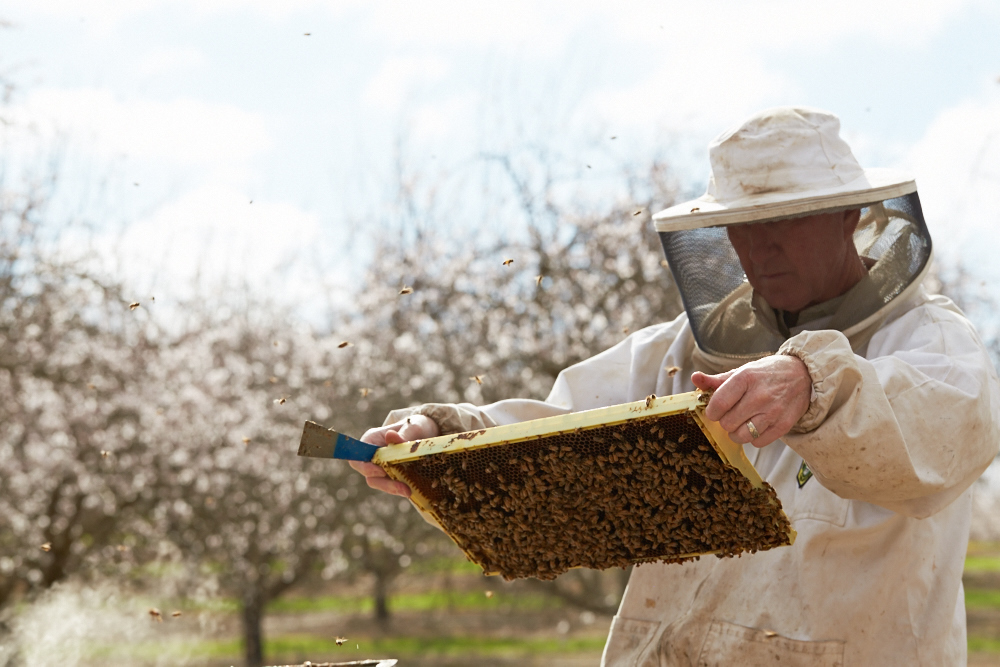Through research insights and partnerships with universities, government agencies, nonprofits, and others, the California Almond community works diligently to ensure that honey bees are happy, healthy, and safe while they visit almond orchards.
Honey Bee Health Research
Since honey bee health was made a strategic research priority of Almond Board of California (ABC) in 1995, the California Almond community has committed $2.6 million through 113 research projects to address the five major factors impacting honey bee health – varroa mites, pest and disease management, genetic diversity, pesticide exposure, and access to forage and nutrition. The California Almond community has funded more honey bee health research than any other crop group,1 and in 2017, six new bee research studies were funded, with a commitment of nearly $300,000 to improving honey bee health.

In the last two decades, this research has helped ABC establish Honey Bee Best Management Practices (BMPs) for California Almonds. These guidelines provide key recommendations to everyone involved in the pollination process, from the beekeeper to the almond farmer and everyone in between, to make the orchard a safe and welcoming place for honey bees, while balancing the need to protect the developing crop.
The Bee BMPs have garnered praise from leading bee health experts such as University of California, Davis Apiculturist Emeritus Dr. Eric Mussen and been held up as an example for other crops to follow.2

Honey Bee Health Partnerships
ABC is a leader in the honey bee health conversation, partnering with more than 20 organizations to support bee health including universities, government agencies, nonprofits and beekeeping groups.
- Working with honey bee research organization Project Apis m. and others, ABC encourages farmers to provide blooming plants or bee pastures near almond orchards as additional food sources for honey bees before and after almond bloom. Through Project Apis m.’s Seeds for Bees program, almond farmers have planted nearly 20,000 acres of dedicated bee pasture, equal to 14,800 football fields, all filled with blooming plants for bees to enjoy.3
- The Honey Bee Health Coalition brings together beekeepers, farmers, researchers, government agencies, agribusinesses, conservation groups, manufacturers, and consumer brands to improve the health of honey bees specifically around production agriculture. It’s a collaborative approach to improve honey bee health by addressing multiple factors influencing bee health, including hive pests and disease, forage and nutrition, and exposure to crop pesticides.
- The “Bee Informed Partnership” works with beekeepers to better understand which management practices work best. The group monitors hives year-round which helps provide information and research on the pests and diseases affecting bees, which in turn gives the California Almond community the knowledge to keep hives healthy.
Learn more about how the California Almond community takes action in the orchard to support honey bee health during bloom and beyond here: Almonds.com/Bees.